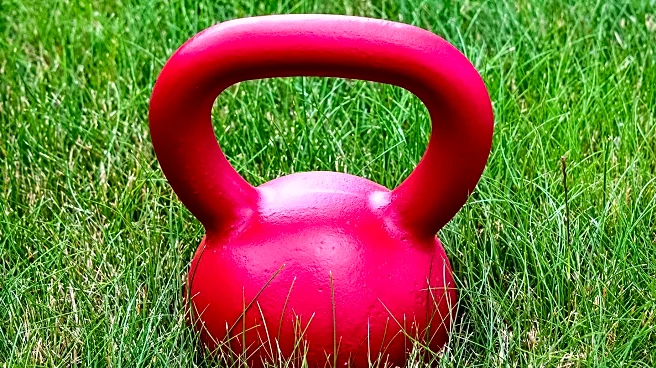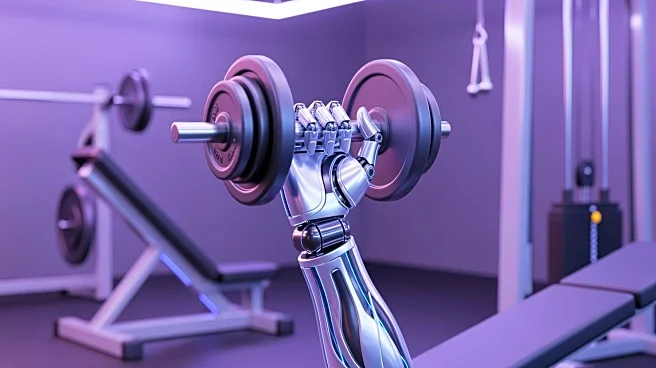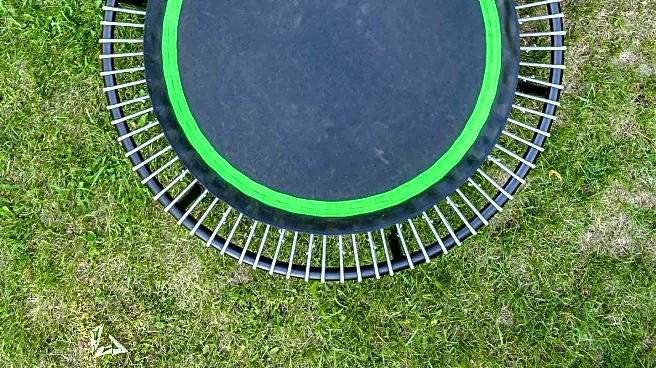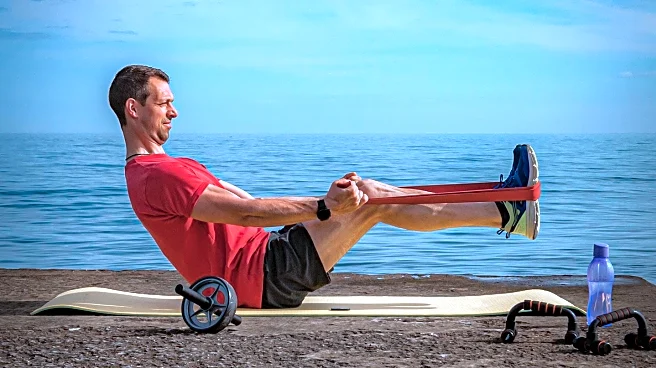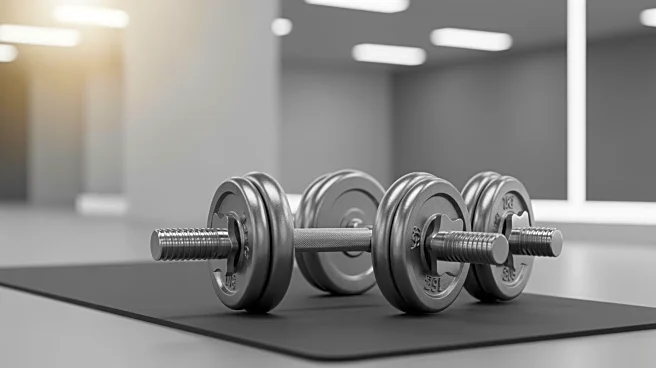What's Happening?
Clif Marshall, a seasoned fitness expert and director of pro athlete training at D1 Training, has highlighted the benefits of kettlebell workouts for building strong glutes and a stable core. Marshall emphasizes the versatility and effectiveness of kettlebells
in lower-body training, noting their ability to engage the glutes, hips, and core in ways traditional weights may not. He recommends a series of exercises, including the band-resisted kettlebell goblet squat and staggered-stance kettlebell Romanian deadlift, which target the glutes from multiple angles to enhance strength, power, and stability. Marshall's approach is rooted in the concept of progressive overload, which is essential for muscle growth and athletic performance.
Why It's Important?
The focus on kettlebell workouts is significant as it offers a practical solution for individuals seeking to improve their physical fitness without the need for extensive gym equipment. By targeting multiple muscle groups, these exercises can enhance athletic performance, improve posture, and provide a strong foundation for various physical activities. This approach is particularly beneficial for those looking to increase functional strength and athleticism, which are crucial for both professional athletes and fitness enthusiasts. The emphasis on progressive overload and muscle activation through kettlebell exercises can lead to long-term health benefits and improved physical capabilities.
What's Next?
As more individuals become aware of the benefits of kettlebell workouts, fitness centers and trainers may increasingly incorporate these exercises into their programs. This could lead to a broader adoption of kettlebell training in both personal and professional fitness routines. Additionally, the growing popularity of kettlebell workouts may drive innovation in fitness equipment design, offering more options for consumers seeking effective home workout solutions.
Beyond the Headlines
The rise of kettlebell workouts reflects a broader trend in the fitness industry towards functional training, which prioritizes movements that mimic real-life activities. This shift may influence how fitness professionals design training programs, focusing on exercises that enhance everyday physical capabilities. Furthermore, the emphasis on glute and core strength highlights the importance of these muscle groups in maintaining overall body stability and preventing injuries.
